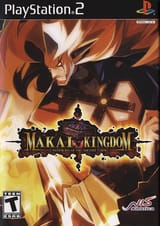Search Results
6/27/2025, 10:12:22 PM
>>3791786
They like to imagine Heaven, Earth, and Hell as different planes with their own "core".
The concept is mostly explored in the spin off title "Makai Kingdom", where an overlord destroys his own netherworld, puts his soul in a tome making it a new "core". Evidently a core can be anything.
This is also explore in Trinity Universe. A netherworld multiverse setting. But the terminology is slightly different. Instead of "Overlord" it's a "Demon God". Instead of a "core" it's a "Demon God Gem".
In Trillion, Trillion is the name of the God of Destruction. It consumed "Heaven's Core". But it didn't elaborate on what that is. Or what it means.
A "God of Destruction" appears in Disgaea 6, as well as the multiverse.
Idea Factory, NIS, and GUST collaborated a great deal in the PS2 era. So even GUST's Atelier games have touched on a multiverse concept. With their recurring Ghost character Pamela making a lot of appearances.
They like to imagine Heaven, Earth, and Hell as different planes with their own "core".
The concept is mostly explored in the spin off title "Makai Kingdom", where an overlord destroys his own netherworld, puts his soul in a tome making it a new "core". Evidently a core can be anything.
This is also explore in Trinity Universe. A netherworld multiverse setting. But the terminology is slightly different. Instead of "Overlord" it's a "Demon God". Instead of a "core" it's a "Demon God Gem".
In Trillion, Trillion is the name of the God of Destruction. It consumed "Heaven's Core". But it didn't elaborate on what that is. Or what it means.
A "God of Destruction" appears in Disgaea 6, as well as the multiverse.
Idea Factory, NIS, and GUST collaborated a great deal in the PS2 era. So even GUST's Atelier games have touched on a multiverse concept. With their recurring Ghost character Pamela making a lot of appearances.
Page 1
